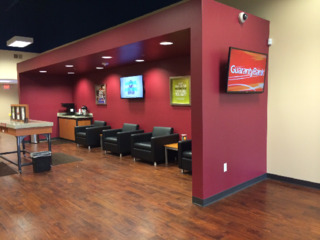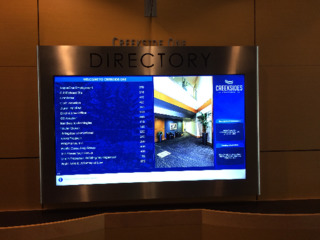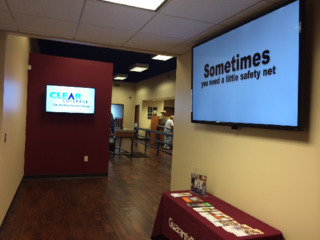Digital Signage Fundamentals: DDS Heads into the Mainstream
The market has changed and DDS has started to be adopted by small and mid-size businesses.

This feature kicks off a four-part series on dynamic digital signage.
In 2014, when we launched our first four-part series on dynamic digital signage (DDS), the market had just passed the “early adopter” phase. There were some major retail, corporate, and other major public deployments, but smaller businesses, mom-and-pop shops, and others scarcely had DDS on their radars. Even for those who were aware of it, it was—or was perceived to be—largely out of their reach, economically and logistically.
For technologies like digital signage, though, two years is an eternity. The market has changed, and DDS has started to be adopted by small and mid-size businesses.
“We’re seeing [digital signage] gain exponentially,” said Wayne Rasor, Manager of Digital Signage for FASTSIGNS International, Inc. “Our customers are screaming for it. We’re seeing it do nothing but grow.” Interest in and demand for DDS isn’t limited to any particular vertical market; they’re all clamoring for it, and in all its various permutations, from mini boards, to lobby kiosks, to outdoor digital. “It’s everything,” said Rasor. “Automotive, manufacturing, safety signs, wayfinding—it’s growing in all those markets.”
A large driver of this growth and interest is that it’s affordable and obtainable for smaller businesses, but DDS has also proliferated enough that these businesses see it and say “I want that.” It takes a crowd to draw a crowd.
At the same time, the conversations that sign companies are having with customers are changing, and the nature of demand is changing. The questions are no longer about the specific elements that are required for digital signage. Now, it’s almost always about content.
“The most important element is the content,” said Rasor. “Without content, that display is essentially the same as blank banner material, just more expensive.”
Case in point. Two years ago, Roland had introduced DisplayStudio, a “digital sign in a box” that included an optional LCD display, a media player to convey content to the display, and the software that controlled and scheduled the content. It was a simple, inexpensive solution, but Roland recently discontinued DisplayStudio, and has been focusing on the one element of digital signage for which customers have been specifically asking: content. Enter CL!CK Content Creator Beta.
“Content on a digital sign system is the equivalent of ink in a printer,” said Jeff DiToro, president and CEO of InClix, a business unit of Roland DG Japan and the developer of CL!CK Content Creator. “It’s the essential ingredient. What we discovered in the case of displays was there was no ink. The ink becomes the content, and the software is the catalyst for the content to feed the display.”
CL!CK Content Creator is a cloud-based content development platform that allows users to quickly and economically create customized content for both static and dynamic signage. This content includes stock photos, video, and audio—all royalty-free and legally licensed—as well as easy-to-use design and layout tools that let newbies integrate these digital assets with their own logos and other custom content and output high-resolution graphics for both print and/or dynamic digital signage.
CL!CK was developed to serve those digital signage users who don’t have the budget or the capabilities to develop their own high-quality digital content. “You have the super professionals at the top who are serving big customers and the content is coming from an agency,” said DiToro. “It’s very high-end. Below that tier, you have everybody from small to medium-size businesses and mom and pop shops with displays, to corporate administrators and HR professionals trying to publish to displays. That’s where it becomes a challenge.”
CL!CK Content Creator is based on a simple three-step process: search for the content you want, create what you want to create with it, and publish it. CL!CK is not a content management system; it’s simply a tool for searching for and editing content, then downloading it as an .mp4, .mov, .jpg, .tif, or other final file format, which is then incorporated into either a printed sign, a digital sign, or even used on the web.
Today, CL!CK is a pay-as-you-go service, although the plan is to transition it to a subscription service. It’s in what the company refers to as “perpetual beta” as users help InClix tweak the service. “We’re doing a whole series of focus groups, and bringing on beta users to help us shape the product for the market,” said DiToro.
Content for digital signage—whatever its source—comprises, essentially, assets, and working with these assets is not very different in the digital sign world than it is in the printed sign world. When a customer wants print signage, they supply the various logos, pictures, text, and other content, and the sign producer combines these elements in a way that makes the resulting sign both aesthetically pleasing and effective for its purpose. That’s the expertise that signmakers offer. Digital signage is no different in principle; only the nature of the assets changes, comprising elements such as video, audio, animation, and other rich media. Working with these media types is the expertise that digital signmakers offer.
Although client companies can outsource the development of digital content to, say, an ad agency, said Rasor, “we do a lot of it in-house. A lot of [clients] are not going to ad agencies because they’re way over their budget.” At the same time, the client company’s own marketing department—if they have one—may lack the proficiency in handling rich media and using it to create effective digital signage. “We’re in that middle ground between what an ad agency can do and what their internal marketing department can do.”
Although the content is the most important aspect, the technology itself changing, too. Early on, Windows PCs were the dominant media controllers, but now Android- and Chrome-based media players have substantially reduced the hardware requirements and the costs. And, like just about everything else, more and more digital signage systems are going to the cloud, which facilitates making changes and updates to digital signage content wherever the custodian of the content may be. DDS content is downloaded from a central cloud-based content management system (CMS) and is cached locally in a media player. This way, if the player loses its Internet connection, it doesn’t affect the signage.
At the same time, digital signage providers may want to lock customers out of the system to keep them from inadvertently altering the sign content or layout. Sign developers have found that customers want to be able to have some control—the ability to make small text edits or change a price—but not necessarily swap out images and videos or do anything that affects the look and feel of the sign. “We give them control using tools they already use, such as an online spreadsheet that has all their menu board item and prices, and the customer can change them as much as they want,” said Rasor. “But if they want to change a background or a picture, that’s what we do.”
The next great shift in digital signage will come as more and more content management platforms support HTML5. HTML5 has been talked about for a number of years now, and is slowly but surely being supported by more and more content management systems. The advantage of HTML5 is not only that it offers a universal standard, but also that it enables responsive web content. Create content once and it’s dynamically reformatted and optimized for horizontal and vertical displays, for phones and tablets as well as large LCD displays—just like a responsive website.
The emphasis on content is also one way of bridging the gap between the printed and digital signage world. “Today, digital signage and [printed] signage are two different markets,” said DiToro. “They’re not really connected. We hope we can create a convergence, and that the display is in fact going to be a sign of the future. What we’re trying to do with CL!CK is create a tool that merges both printing and digital in the same platform.”
Regardless of how the mechanics of dynamic digital signage change, the central question that sign developers and their clients have to ask is, “How can I drive the latest message to the right person in the right place at the right time?” said Rasor—a question that is by no means unique to DDS.
In next month’s installment of this series, we’ll look at the fundamentals of business return on investment.


